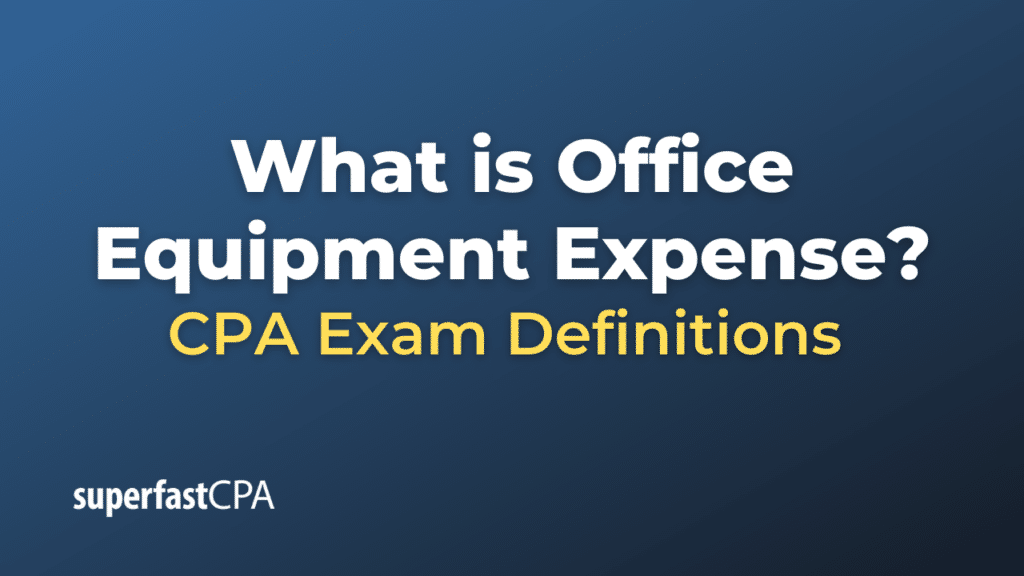Office Equipment Expense
Office Equipment Expense, also known as Office Equipment Cost, refers to the cost a business incurs to purchase, maintain, and replace the equipment used in an office setting. This could include computers, printers, fax machines, telephones, furniture like desks and chairs, software, and other tools necessary to carry out business operations.
When a business purchases office equipment, it is typically considered a capital expenditure because these items have a useful life that extends beyond a single reporting period (usually more than a year). Consequently, the cost of the equipment is not recognized immediately as an expense in the income statement. Instead, the cost is capitalized (recorded as an asset on the balance sheet) and then depreciated over the useful life of the equipment. This process spreads the cost of the equipment over several years, aligning with the principle of matching expenses with the revenues they help to generate.
Depreciation Expense: This is the portion of the equipment’s cost that is recognized as an expense each year. The method of depreciation can vary (e.g., straight-line, double-declining balance), but the goal is to allocate a portion of the asset’s cost to each fiscal period over the asset’s useful life.
Maintenance and Repairs: These are costs to keep the equipment in working order or restore it to its normal condition. These costs are usually expensed as incurred.
Software Subscriptions: If the office uses software that requires a regular subscription, these are often treated as operational expenses and are usually expensed when incurred.
Finally, when office equipment is replaced or disposed of, there could be additional costs or losses recognized, such as the cost to dispose of the equipment or a loss if the equipment is sold for less than its book value.
Overall, office equipment expense can be a significant cost for many businesses, but it’s an essential investment for businesses to operate efficiently and effectively.
Example of Office Equipment Expense
Suppose a company, ABC Enterprises, purchases a high-quality copier for their office at the beginning of the year. The cost of the copier is $5,000, and it’s expected to have a useful life of five years with no salvage value at the end (meaning it won’t be worth anything for resale).
ABC Enterprises decides to use straight-line depreciation, which means the cost of the copier will be evenly spread out over its useful life.
Therefore, the depreciation expense for the copier will be $1,000 per year ($5,000 divided by 5 years). This expense will be recorded annually for five years.
In the third year of owning the copier, ABC Enterprises has to spend $200 on maintenance and repairs. This cost is recognized as an office equipment expense in that year.
Moreover, ABC Enterprises uses a software with the copier that has an annual subscription cost of $300. This cost is also recognized as an office equipment expense each year.
So, for the third year, the total office equipment expense related to the copier would be the annual depreciation ($1,000), plus the maintenance cost ($200), plus the software subscription cost ($300), totaling $1,500.
This example illustrates how the purchase price of office equipment is spread out over the equipment’s useful life as a depreciation expense and how other costs like maintenance and software subscriptions are also part of the office equipment expense.













